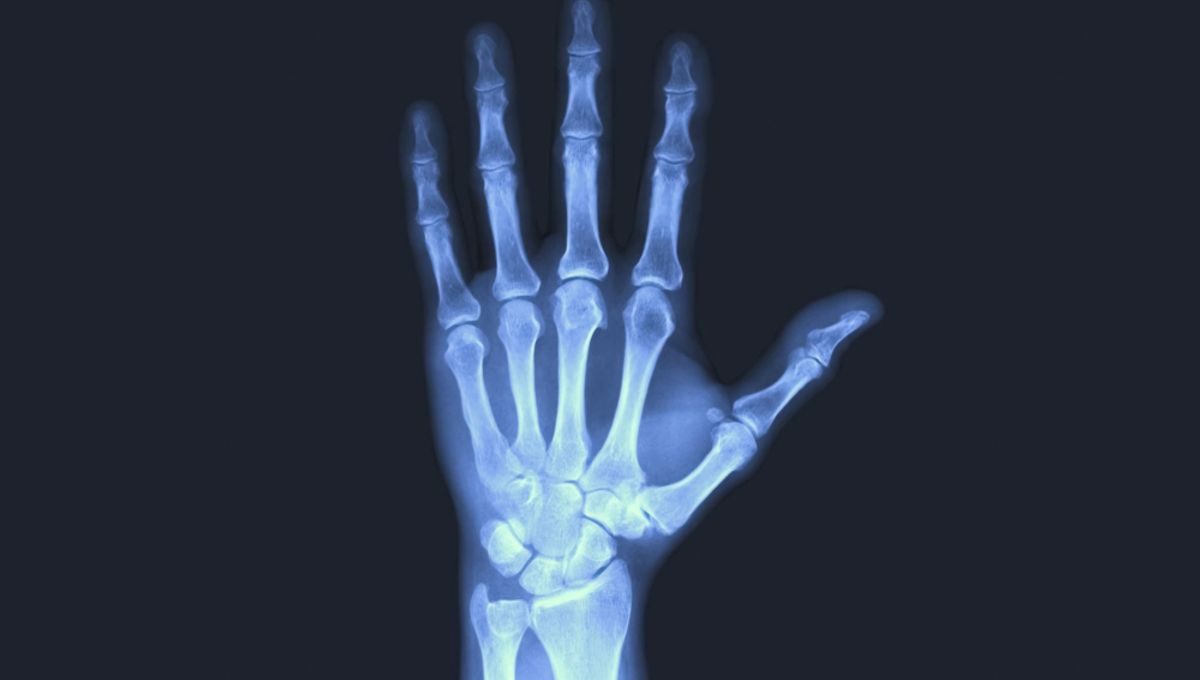
The possibility of sending astronauts to Mars has sparked research into some under-studied spaceflight problems, like what to do if an astronaut breaks a bone or suffers a blood clot. Patching someone up in microgravity is likely to be hard enough, but harder still is having the capacity to map what needs to be done. Rather than transporting an X-ray machine to another world, one experiment is investigating harnessing naturally occurring space radiation.
X-ray machines are heavy and bulky. Every gram counts on space missions so astronauts on the International Space Station (ISS) use ultrasound instead. However, there is a reason we still use X-rays to diagnose a wide range of conditions: there are a lot of things ultrasound can’t do or can’t do as well.
The longer the mission, the more of a problem lack of access to X-ray machines becomes. Besides the sheer length of the 21 months anticipated for future Mars missions, the time on the Red Planet is likely to be a lot more active and injury-prone than being cooped up on the ISS.
However, there is no shortage of X-rays in space, as numerous X-ray telescopes reveal. The University of Southern California is investigating the possibility of using high-energy photons from exploded stars or black hole jets to avoid the need to make our own.
“In space, we know there’s more ionizing radiation than on Earth,” Dr John Choi said in a statement. “Can we take advantage of that radiation as a source that allows us to capture an image?”
To explore that possibility, Choi and colleagues are going back to a previous generation of X-ray machines, using film and an intensifying screen. The Polaris Dawn mission, to be launched sometime after March 1, 2023, will carry a piece of screen into space to see whether there will be sufficient radiation to make it glow.
Radiographers once used screens like this to convert the X-rays that passed through the body into visible light, which was collected by the film. Today, the shadows created by bones and organs are observed using digital detectors, but slightly out-of-date technology isn’t the main obstacle.
Taking X-rays in space is likely to involve substantial challenges. The radiation is not all coming from one direction, as would be the case in a hospital lab, and covers a wide area of the spectrum. Nevertheless, the use of the screen represents a first step towards building a diagnostic device that could be the difference between success or failure for a future mission. If the screen glows, Choi has a proof of principle to start tackling the other aspects. If it doesn’t, it’s back to the drawing board or hoping astronauts suffer no injuries.
The team note there may also be benefits for Earth-based medicine from experimenting with extreme radiography, for example making images using smaller radiation doses.
The experiment is just one of many Polaris Dawn will carry during its five-day mission, which aims to reach the highest Earth orbit ever achieved. Other projects will involve using ultrasound to investigate susceptibility to decompression sickness (“the bends“) and studying Spaceflight Associated Neuro-ocular Syndrome (SANS). Changes to the structure of the eye and brain in microgravity, which get worse with time, pose a threat to long-duration missions.
Anyone who gets to go to Mars and come back is unlikely to lack cool stories. Nevertheless, being able to say someone worked out what treatment your fracture needed using radiation from a black hole has got to be up there.
Source Link: Space Radiation Threatens Astronauts But Could Also Save Their Lives